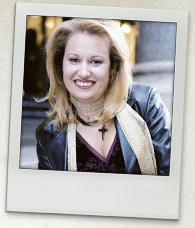Larissa Behrendt talks
Teaching notes


How to use this resource
‘Larissa Behrendt talks’ is part of the larger resource, Writers talk and aims to stimulate students to read and respond to literature and to the wider issues raised by the work.
Larissa Behrendt is Professor of Law and Indigenous Studies and Director of the Jumbunna Indigenous House of Learning at the University of Technology in Sydney. Larissa graduated from the University of NSW and Harvard University with a Doctorate in Law. She is an award-winning author of books and articles, a member of numerous boards to do with law and the arts, and is a prominent social commentator on Indigenous issues. She was a director of and participant in the 2007 Sydney Writers’ Festival. Larissa Behrendt belongs to the Eualeyai/Kamilaroi nations in north-western NSW.
This resource contains videos addressing Behrendt’s ideas about:
- Larissa Behrendt’s background
- inspiration for writing
- influences on her work
- writing processes
- writing Home
- different perspectives
- literary techniques
- richness of culture.
Each video has a series of questions or comments for students to consider and discuss. Teachers may find it useful to combine this resource with others listed in the Related resources section to extend students’ learning.
‘Larissa Behrendt talks’ can be used with students working towards achieving outcomes from Stages 4, 5 and 6 of the NESA Aboriginal Studies and English syllabuses. The syllabuses can be found at:
English
Stage 4
Students using ‘Larissa Behrendt talks’ have the opportunity to:
- learn to read and respond to texts for pleasure and enjoyment
- learn to explore real and imagined worlds through engagement with texts
- learn about features of texts including characterisation and setting
- learn about experiences and perspectives that shape texts.
Stage 5
Students using ‘Larissa Behrendt talks’ have the opportunity to:
- learn to read and respond to texts for pleasure and enjoyment
- learn to explore real and imagined worlds through consideration of different perspectives
- learn about the ways situational and cultural elements of context shape texts
- learn about the way texts explore emotional and moral complexity.
Stage 6
Students using ‘Larissa Behrendt talks’ have the opportunity to:
- learn to read and respond to texts personally, critically and interpretively
- describe and analyse the ways that language forms influence responses
- learn about the ways situational and cultural elements of context shape texts
- learn about the way relationships between composer, text and context shape meaning.
Aboriginal Studies
Stage 5
Students using ‘Larissa Behrendt talks’ have the opportunity to:
- learn about what influences a person’s cultural identity
- learn about different ways Aboriginal culture can be expressed and interpreted
- learn about the importance of kinship to Aboriginal people
- learn to recognise how cultural expressions survive and change over time
- learn to recognise how Aboriginal connections to Land and spirituality is expressed in cultural activities such as literature
- learn to investigate examples of Aboriginal people acting as advocates for their community through the arts and media
- learn to analyse and evaluate the ways a balanced view of Aboriginal culture can be presented through the media and the arts.
Quality teaching
This resource, along with study of the texts written by the featured author, can be used to address the elements of Quality teaching in NSW public schools.
The Writers talk resource, and related classroom discussion and learning activities, enable students to:
- explore the features of stories and concepts developed by current writers whose work is acknowledged for its significance (Higher-order thinking)
- recognise, acknowledge and value substantial cultural knowledge and the way storytelling supports cross-cultural understanding (Cultural knowledge)
- recognise and explore connections to values and attitudes. Through the writers’ narratives, students can reflect on the way stories affect the perception of self in the modern world (Connectedness)
- use the metalanguage of literary criticism and language use (Metalanguage)
- learn through focusing questions that knowledge is socially constructed with multiple layers and personal interpretations (Problematic knowledge).